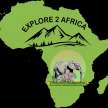Best time to climb Kilimanjaro
The best time to climb Kilimanjaro is during the dry seasons: June to October and December to March, at an affordable price of $1500 to $2500 per person

There are two main dry seasons:
1. December to March: This is considered the best time to climb Kilimanjaro. The weather is generally clear, and the temperatures are milder, making for a more comfortable climb. However, it can be quite busy on the trails during this period.
2. June to October: This is also a good time to climb Kilimanjaro, with relatively dry and clear conditions. The temperatures are a bit colder compared to the December–March period, but it's still a popular time for climbers.
Climbing Mount Kilimanjaro, the majestic peak that graces Tanzania's landscape, is a remarkable adventure that requires careful consideration of timing to ensure the best experience. The best time to climb Kilimanjaro depends on weather conditions, crowd levels, and personal preferences, all of which play a crucial role in determining the overall cost and quality of your ascent.
Kilimanjaro's weather patterns are influenced by its proximity to the equator. The mountain experiences two distinct rainy seasons: the long rains from March to May and the short rains in November. These periods often bring wet and muddy conditions, making trails slippery and less enjoyable to trek. Consequently, climbing during these rainy seasons is less advisable, as it can result in increased difficulty, discomfort, and reduced visibility.
The optimal time to climb Kilimanjaro is during the dry seasons, which are typically divided into two periods: January to early March and June to October. These months offer the most favorable weather conditions, with clear skies, lower chances of rain, and relatively warm temperatures during the day. Climbing during these periods enhances your chances of reaching the summit while enjoying panoramic views of the surrounding landscapes.
June to October are particularly popular for their cooler temperatures and clear skies. This period aligns with the Northern Hemisphere's summer months, making it a sought-after time for travelers. The warm days and cool nights offer comfortable trekking conditions, making the climb more enjoyable.
January to early March, on the other hand, is also a great time to ascend Kilimanjaro. While this period falls within the Northern Hemisphere's winter, the weather remains generally favorable for climbing. However, it's worth noting that January and February are peak months for tourist activity on the mountain, leading to potentially higher costs due to increased demand for services.
To optimize your Kilimanjaro experience and manage costs effectively, consider the following points:
1. Advance Booking: Planning well in advance allows you to secure permits, accommodations, and guides at better rates. As demand increases closer to peak seasons, prices may rise.
2. Shoulder Seasons: If you're looking to avoid both crowds and high costs, consider the shoulder seasons of early November and late March to April. These months fall between the rainy and dry seasons, offering a compromise between weather conditions and affordability.
3. Group Travel: Joining a group climb can often lead to cost savings. Group packages may include shared costs for guides, porters, and accommodations.
4. Personal Preferences: Assess your tolerance for colder temperatures and your desire for clear views. Some climbers prefer warmer temperatures, while others value clear skies more.
5. Reputable Operators: While costs are important, prioritize safety and quality by choosing a reputable tour operator with experienced guides and ethical treatment of staff.
In conclusion, the best time to climb Kilimanjaro is during the dry seasons of January to early March as well as June to October. These periods offer the most favorable weather conditions for an enjoyable and successful climb at 5895 meters or 19340 feet. Planning ahead, considering shoulder seasons, and factoring in personal preferences will help you optimize costs and enhance your overall Kilimanjaro experience.
About the Creator
Explore 2 Africa
Best tour company in Africa






Comments
Explore 2 Africa is not accepting comments at the moment
Want to show your support? Send them a one-off tip.